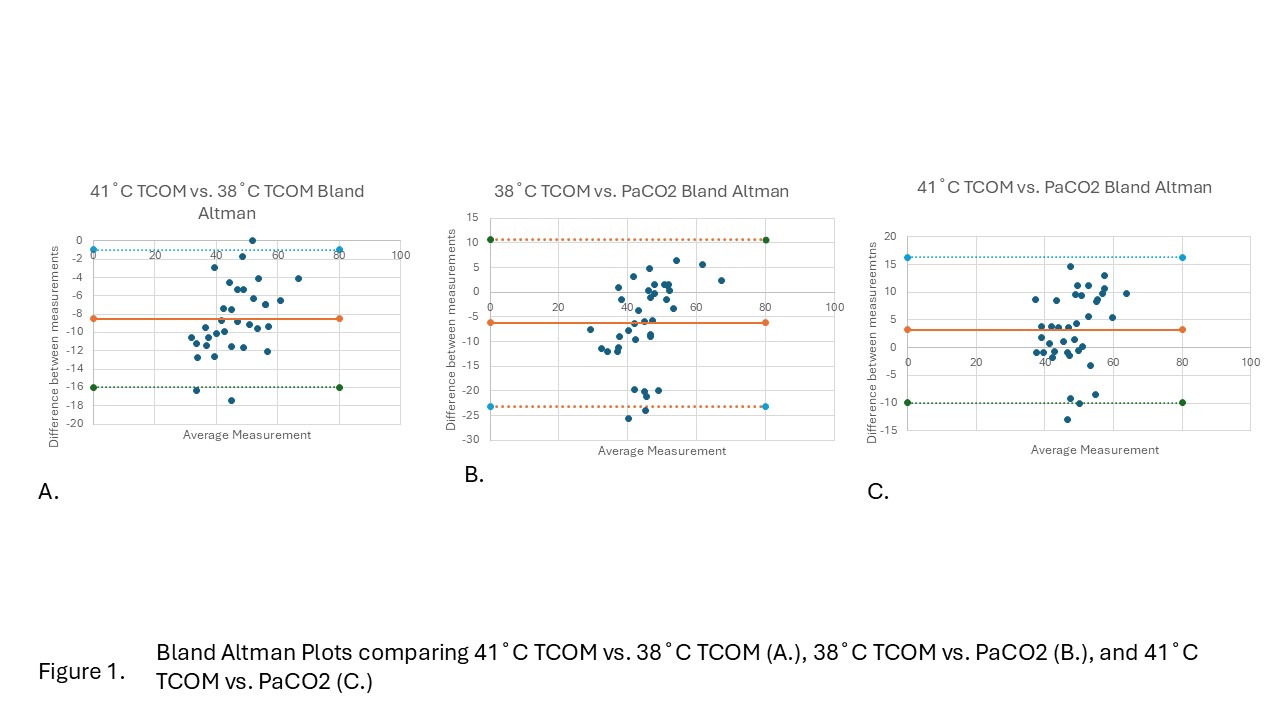Neonatal General 4: Novel Technology and Therapies
Session: Neonatal General 4: Novel Technology and Therapies
813 - Effect of different electrode temperatures on accuracy and safety of transcutaneous carbon dioxide monitoring and the utility of continuous transcutaneous oxygen tension monitoring
Friday, April 25, 2025
5:30pm - 7:45pm HST
Publication Number: 813.5082
Vidhi Jhaveri, University of California, Davis, School of Medicine, Sacramento, CA, United States; Alexandra Leegwater, University of California Davis Children's Hospital, Sacramento, CA, United States; Brian J. Smith, University of California Davis Children's Hospital, Sacramento, CA, United States; Satyan Lakshminrusimha, UC Davis, Sacramento, CA, United States; Deepika Sankaran, University of California Davis Children's Hospital, Sacramento, CA, United States

Vidhi Jhaveri, MD (she/her/hers)
Fellow
University of California, Davis, School of Medicine
Sacramento, California, United States
Presenting Author(s)
Background: Transcutaneous CO2 (TcPCO2) monitoring (TCOM) is increasingly used in ventilated preterm infants for noninvasive continuous monitoring of PaCO2. Due to the thin, immature epidermal layer, TCOM use at the standard electrode temperature of 41 ˚C may be associated with skin erythema and discomfort. Recently, optical transcutaneous PO2 (TcPO2) sensors featuring an optical fluorescence quenching O2 measurement that computes PaO2 through fluorescence decay of a dye that is quenched by O2, were validated in preterm newborns.
Objective: To determine if there is good correlation of TcPCO2 and TcPO2 at a lower electrode temperature (38˚C vs 41˚C) compared to arterial PaCO2 and PaO2, respectively.
Design/Methods: Preterm newborn infants born at < 29 weeks gestation, with arterial lines, were monitored with the simultaneous placement of two TCOM probes (at 41˚C vs 38˚C, respectively). The sites were not controlled for. The 38˚C TCOM device was masked. TcPCO2 and TcPO2 from both devices (at 41˚C vs 38˚C) were continuously recorded and compared to PaCO2 and PaO2 with Bland-Altman plots. SpO2 was also collected and compared. No adverse effects were observed in the skin with TCOM at 41˚C vs 38˚C.
Results: Thirty-five data points from 4 infants with average gestational age of 25w6d (1.7 weeks) were analyzed. The TCOM with electrode temperature at 41˚C and 38˚C had wide variability compared to arterial PaCO2. The correlation was similar with standard 41˚C as with 38˚C. The correlation of TCPO2 in the TCOMs at 41˚C and 38˚C with PaO2 was poor. There were no adverse effects on the skin with the standard or low temp TCOM.
Conclusion(s): While the TCOM at 41˚C and 38˚C did not seem to lean consistently more positive or negative compared to the PaCO2, both had such a large variation, the results were not reliable for either temperature TCOM. The TcPO2 at both the 41˚C and 38˚C were not reliable for PaO2.
Figure 1
 Bland Altman Plots comparing 41˚C TCOM vs. 38˚C TCOM (A.), 38˚C TCOM vs. PaCO2 (B.), and 41˚C TCOM vs. PaCO2 (C.)
Bland Altman Plots comparing 41˚C TCOM vs. 38˚C TCOM (A.), 38˚C TCOM vs. PaCO2 (B.), and 41˚C TCOM vs. PaCO2 (C.) Figure 2
.jpg) Regression analysis comparing 38˚C TcPO2 vs. PaO2 (A.), and 41˚C TcPO2 vs. PaO2 (B.)
Regression analysis comparing 38˚C TcPO2 vs. PaO2 (A.), and 41˚C TcPO2 vs. PaO2 (B.) Figure 3
.jpg) Bland Altman Plots comparing 38˚C TcPO2 vs. PaO2 (A.), and 41˚C TcPO2 vs. PaO2 (B.)
Bland Altman Plots comparing 38˚C TcPO2 vs. PaO2 (A.), and 41˚C TcPO2 vs. PaO2 (B.) 
